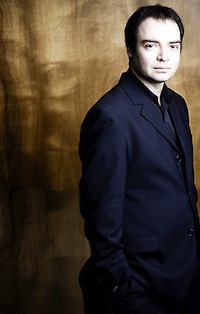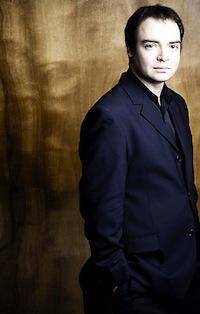
Alexander Melnikov’s recital on Saturday afternoon at the San Francisco Conservatory was one of the more notable Bay Area debuts. And not only because of its gargantuan length: It took Melnikov a full three hours (including two intermissions) to get through the entire set of Dmitri Shostakovich’s Twenty-Four Preludes and Fugues, Op. 87. Even more remarkable was Melnikov’s extraordinary array of tone colors, his intense eloquence, and his adroitly flexing tempos.
Pianists who play Shostakovich’s Preludes and Fugues must cope with assorted technical and expressive difficulties. On the rewarding side, however, the set offers the performer the widest possible range of stylistic and expressive opportunities. It includes stylized Baroque forms, Russian laments and dance tunes, instrumental arias and recitatives, and even echoes of Jewish klezmer music. Its moods change from tranquil to droll to tragic to sarcastic to horrifying. The breadth of the set’s harmonic language is every bit as staggering. It spans from the C-major Fugue, written without a single sharp or flat and played exclusively on the white keys, and the A-major Fugue, which doesn’t contain a single dissonance, to the highly chromatic and essentially atonal fugues in D-flat major and E-flat major.
Melnikov’s adventurous approach to the Preludes and Fugues kept even the most indifferent listeners spellbound, though it did falter on occasion. The B-minor Prelude came out uncharacteristically — for Melnikov — raucous and muddled, delivered in a rigid tempo and smothered with generous pedaling. But when a low point for an artist is his playing like almost everyone else, it’s still a pretty high mark. (In Melnikov’s award-winning recording of the Preludes and Fugues, released by Harmonia Mundi in 2010, the B-minor Prelude sounds as refreshingly original as the rest of the cycle.)
Melnikov’s adventurous approach to the Preludes and Fugues kept even the most indifferent listeners spellbound.
As for the many high points of the program, here are just a few: the astonishing lightness of the nimble A-minor Prelude, with slowly floating inner voices; the quirky, irresistibly charming D-major Prelude and Fugue, with its sudden and endearing turns that startled not only the audience but, it seemed, the pianist himself; and the beautifully crafted sonic layers in most of the Preludes and Fugues that often did not even sound like a piano but rather resembled an organ, or sundry orchestral instruments, or perhaps powerful bell pealing.
Brilliant Sonic Tour Guide
Like a solicitous tour guide through Shostakovich’s unique landscape, Melnikov showed the finest sites in the most vivid possible light, thoughtfully underscoring the most interesting harmonic, contrapuntal, and thematic events. A wizard of tone colorings, Melnikov created mesmerizing sound effects. The monologues and dialogues among various polyphonic voices were marked by deeply expressive, speechlike qualities.
Melnikov created mesmerizing sound effects.
Unfortunately, the audience followed the silly modern concert etiquette, refusing to applaud between movements. Although there were plenty of collective oohs and aahs after many pieces, the listeners stoically restrained from putting their hands together until the very end of each of the three parts of the program. My other regret was that after the final standing ovation, Melnikov chose not to play any encores, which was understandable, since a car was waiting to take him to the airport — he was scheduled to play another afternoon concert the next day in Vancouver.

